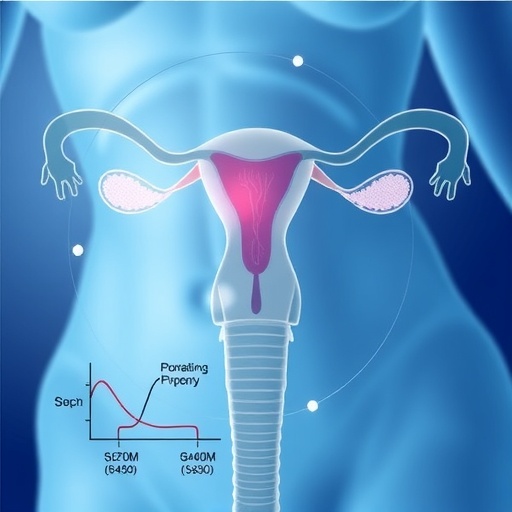Recent breakthroughs in Parkinson’s disease (PD) research underscore a deepening understanding of the inflammatory processes that underpin this complex neurodegenerative disorder. Although inflammation’s role in PD has been acknowledged for decades, clarifying the origins and mechanisms—whether arising within the central nervous system (CNS) or peripheral immune compartments—remains an intricate challenge. Emerging evidence compellingly supports that both central and peripheral immune alterations exist even at the earliest stages of PD, suggesting a bidirectional interplay between systemic and brain inflammation.
Chronic inflammatory diseases such as inflammatory bowel disease, psoriasis, arthritis, and diabetes have been epidemiologically linked to heightened PD risk, amplifying the hypothesis that peripheral inflammation could act as a primary trigger for neuroinflammation. This connection implicates systemic immune dysregulation as a potential catalyst for neurodegenerative cascades, possibly mediated by compromised blood-brain barrier (BBB) integrity and sustained immune signaling infiltration into the CNS.
Numerous fluid biomarkers have been analyzed in both cerebrospinal fluid (CSF) and peripheral blood to map the inflammatory milieu in PD patients. Meta-analytical results from over a hundred studies reveal consistent elevation of pro-inflammatory cytokines including interleukin (IL)-1β, IL-6, tumor necrosis factor (TNF), along with chemokine CCL2 (MCP1) and C-reactive protein (CRP) across both CNS and peripheral compartments when compared with healthy controls. Intriguingly, other inflammatory mediators such as fractalkine (CX3CL1), CXCL12, soluble TNF receptor-1, and N-terminal-pro-B-type natriuretic peptide show significant upregulation solely in the periphery, whereas nitric oxide increases are predominantly observed within the CSF. This compartmentalized biomarker expression suggests nuanced regulatory pathways in peripheral versus central inflammation, potentially shaped by differential receptor expression, transport mechanisms across the BBB, or localized immune cell activation states.
.adsslot_a3ZX0hNEmP{ width:728px !important; height:90px !important; }
@media (max-width:1199px) { .adsslot_a3ZX0hNEmP{ width:468px !important; height:60px !important; } }
@media (max-width:767px) { .adsslot_a3ZX0hNEmP{ width:320px !important; height:50px !important; } }
ADVERTISEMENT
Physical exercise, though acutely capable of provoking transient inflammatory responses, displays profound chronic anti-inflammatory effects across diverse populations afflicted with metabolic or degenerative conditions. Systematic reviews affirm that regular aerobic exercise significantly diminishes circulating levels of TNF, IL-6, and CRP — inflammatory markers elevated in PD — heralding exercise as a powerful modulator of systemic inflammation. In PD cohorts specifically, emerging trials employing moderate-to-high intensity interval training for 8 to 12 weeks have evidenced meaningful reductions in systemic TNF levels, although effects on IL-6 remain inconclusive, and CRP has yet to be thoroughly investigated.
Remarkably, preclinical models extend the benefits of exercise to neuroinflammation, demonstrating that physical training attenuates pro-inflammatory cytokines IL-1β and TNF within brain regions critical to PD pathology, such as the striatum and substantia nigra. These findings intimate that exercise-induced immunomodulation traverses beyond the bloodstream to encompass neuroimmune signaling within the CNS, though direct validation in human PD populations is still pending and merits further inquiry.
Among the inflammatory markers studied, TNF, IL-6, and CRP emerge as the most reliable indicators for tracking exercise-induced changes in PD-associated inflammation. Their robustness stems from consistent elevation in both peripheral and central samples across numerous studies, their extensive validation in PD populations, and the replicable reductions observed with exercise interventions in related chronic inflammatory diseases. However, the biological complexity of IL-6, with its dual pro- and anti-inflammatory roles mediated through classical and trans-signaling pathways, complicates its interpretation as a mechanistic biomarker.
TNF’s pathogenic significance in PD is well established. Elevated TNF protein and mRNA levels have been detected in CSF and dopaminergic brain regions for over two decades, reflecting persistent immune activation. Both innate immune cells like microglia and adaptive immune cells such as T lymphocytes exhibit dysregulated TNF signaling, heightening susceptibility to TNF’s neurotoxic effects. Epidemiological data bolster this notion, revealing that anti-TNF therapies used in inflammatory bowel disease patients correlate with reduced PD risk, suggesting that targeted immunomodulation could delay or mitigate disease onset.
IL-6 presents a more enigmatic profile within PD research. While peripheral and central IL-6 elevation correlates with diminished functional abilities and cognitive decline, experimental models reveal that IL-6 also mediates neuroprotective responses, particularly those initiated by exercise. Its pleiotropic signaling requires sophisticated assays quantifying not only IL-6 itself but also its soluble receptors to disentangle its pathophysiological versus reparative roles in PD.
CRP, an acute-phase reactant driven by upstream cytokines, stands out as a cumulative biomarker reflecting systemic inflammatory burden. Elevated CRP levels associate with worsened disease prognosis, accelerated progression, and non-motor symptoms including cognitive impairment and mood disturbances. Though direct assessments of exercise effects on CRP in PD are lacking, evidence from other aging and metabolic cohorts suggests that sustained aerobic training can significantly lower CRP, positioning it as a promising surrogate marker for future exercise-based interventions.
Beyond these established markers, IL-1β contributes to PD pathogenesis through activation of inflammasomes, driving pyroptotic neuronal death. While exercise’s impact on IL-1β is equivocal, combined aerobic-resistance training may confer anti-inflammatory benefits reflected in lowered IL-1β in cardiometabolic populations. The limited ability to measure IL-1β accurately in peripheral blood poses a technical barrier to clarifying its role in PD exercise trials.
CX3CL1, also known as fractalkine, has garnered increasing attention as a chemokine modulating neuron-microglia communication. Elevated peripheral levels in PD contrast with inconsistent central findings, and exercise studies yield contradictory results depending on population and intervention type. The complexity and nascent state of CX3CL1 research highlight the need for targeted studies to elucidate its utility as an inflammation biomarker in PD exercise regimens.
A particularly exciting frontier involves clusterin, an extracellular chaperone protein induced by exercise and implicated in inhibiting complement activation and preventing aggregation of misfolded proteins central to PD pathology like α-synuclein. Animal models demonstrate that clusterin mediates anti-inflammatory effects of physical activity, and preliminary human data in mild cognitive impairment suggest exercise-induced rises in plasma clusterin. Intriguingly, decreased clusterin expression has been observed in PD patient plasma exosomes, signaling its potential as both a biomarker and therapeutic target modulated by physical activity.
This growing body of evidence paints a compelling picture wherein aerobic exercise exerts multifaceted anti-inflammatory actions, modulating systemic cytokine levels, enhancing BBB integrity, and promoting neuroprotective molecular pathways. Given the prominence of inflammation in PD pathogenesis, integrating exercise as both a therapeutic and disease-modifying strategy holds substantial promise. Future research that couples robust biomarker tracking with standardized clinical exercise protocols will be instrumental in unraveling the precise mechanisms by which physical activity reshapes the neuroimmune landscape in Parkinson’s disease.
The challenges ahead include refining sensitive assays for less well-studied cytokines, extending investigations into CNS inflammatory responses in human PD, and delineating how exercise parameters—intensity, duration, modality—influence inflammatory dynamics. Moreover, a deeper mechanistic understanding of IL-6’s dualistic roles, the contributions of chemokines such as CX3CL1, and the neuroprotective potential of factors like clusterin could unlock novel therapeutic avenues. As our grasp on exercise-induced immunomodulation expands, this may herald an era where tailored lifestyle interventions complement pharmacotherapy to slow or prevent the progression of Parkinson’s disease.
In summary, inflammation emerges as a central driver of Parkinson’s disease pathology, with both peripheral and central immune systems intricately involved. Aerobic exercise demonstrates potent capabilities in reducing pro-inflammatory markers such as TNF, IL-6, and CRP, underscoring its promise as a non-pharmacological intervention. Unraveling the complex interplay of cytokines, chemokines, and immune regulators in response to exercise will not only deepen understanding of PD pathogenesis but may ultimately transform patient care by harnessing the body’s own capacity for neuroimmune restoration.
Subject of Research: Inflammatory biomarkers and the impact of aerobic exercise on immune modulation in Parkinson’s disease.
Article Title: Aerobic exercise-induced changes in fluid biomarkers in Parkinson’s disease.
Article References:
Luthra, N.S., Mehta, N., Munoz, M.J. et al. Aerobic exercise-induced changes in fluid biomarkers in Parkinson’s disease. npj Parkinsons Dis. 11, 190 (2025). https://doi.org/10.1038/s41531-025-01042-8
Image Credits: AI Generated
Tags: aerobic exercise and neurodegenerationbiomarkers in Parkinson’s diseaseblood-brain barrier integrity in Parkinson’scentral nervous system inflammationchronic inflammatory diseases and PD riskimmune dysregulation in Parkinson’sneuroinflammation and Parkinson’sParkinson’s disease researchperipheral immune alterations in PDpro-inflammatory cytokines in neurodegenerationrole of inflammation in Parkinson’ssystemic immune signaling and brain health




